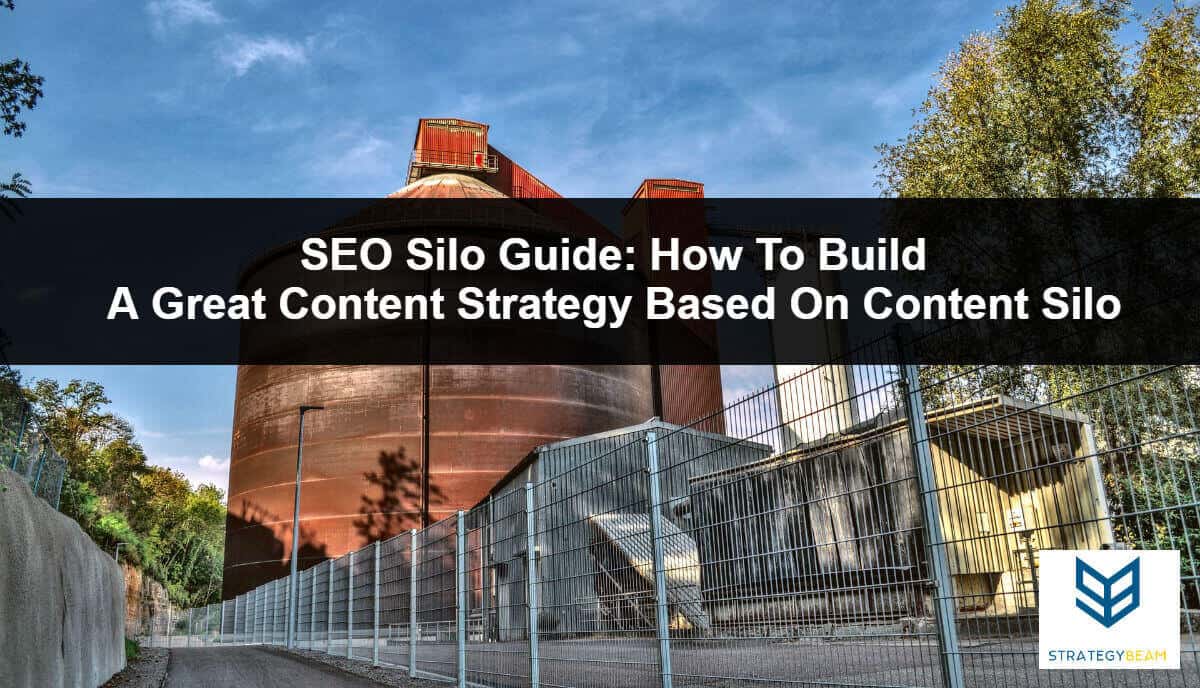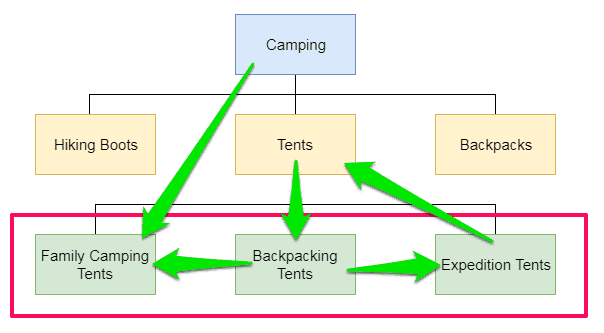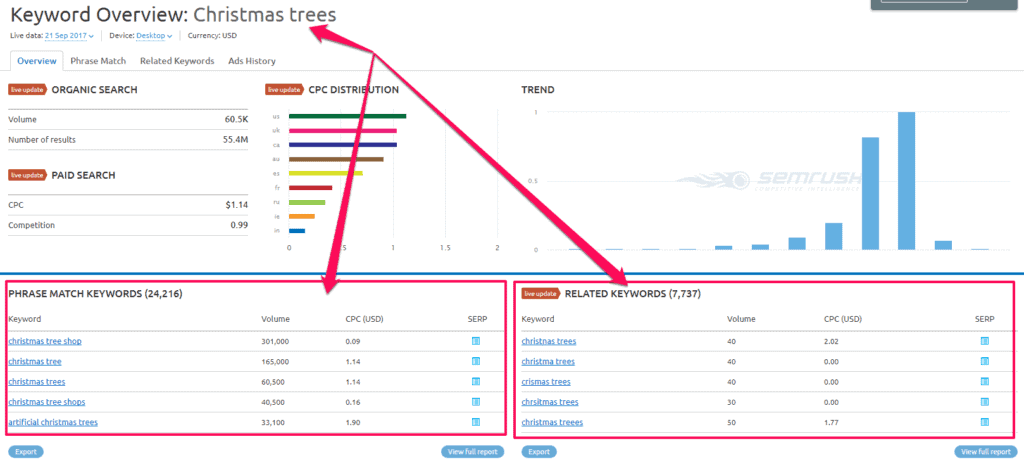
Building A Strong Base With SEO Silos
No matter how much you optimize your website, the truth is that you can always find ways to improve some aspect of your site. Whether upgrading on the content, technical SEO strategy or enhancing load speed, there is still something that you can do to improve the way search engines interpret your content and how your customers engage with your site.
“Siloing” content on a website has started getting a lot of attention in the SEO community, and while the term “silo SEO” sounds scary the truth is it is just a way of organizing content on your site.
An SEO silo is an organizational approach to how you structure your site, and it is a great way to help search engines and your audience understand your content. Even if you are just starting a website, you can see immediate benefits by using a siloed approach to content and SEO.
Benefits Of SEO Silos
In agriculture, silos are used to organize grain, oats, and other types of products from each other. This approach to organization saves farmers time when they need to transport specific types of products, and silos play a similar role in SEO.
Since silo SEO could help you organize your material according to relevant content, you’ll have the advantage of being able to align the needs of your customers in a way that search engines crawl the content quickly.
Your website will experience many benefits by building content around strict SEO silos. Not only will your customers be able to navigate your site easier, search engine bots will be able to crawl your information more efficiently.
Both search engine bots and human customers are both lazy and will only look through your site if it is easy to consume. SEO silos help you achieve these goals and offer other benefits like:
- Build strong thematic associations within each SEO silo.
- Help define the purpose of each section of your site. Human readers and search engine bots will reward you with more clicks and better indexing.
- Organize content into meaningful and thoughtful associations to boost your online value.
- Improve the authority for specific themes in each silo. This helps you gain higher rankings for thematic keyword associations.
SEO silos have their root in technical SEO, but in reality, SEO silos fuel both your SEO marketing and content marketing efforts. The only way to build a profitable content marketing strategy is to produce content that addresses the needs of your customers and gets found through search engines.
Here are four elements that you should think about as you build a content strategy based on SEO silos.
1. Come Up with a Foolproof Content Strategy
Perhaps you are looking to start a new website, or you want to improve rankings for an existing site so you can drive more revenue. In both cases, you will need to think about how your content is structured on your site, and the best place to start is to think about SEO silos.
Beginning with a silo will help you build a strong foundation before moving forward, and you can create a content strategy to move forward on.
Work with your team to write out the main categories that your site works with. For a service-based company, you should write the main groups of services that you offer. If you have an e-commerce store, then you should write out the main product categories and group all products in their respective silos.
Once you divide out your services or products, you should start creating high-quality website content based on the needs and questions of your customers.
You can build out the content strategy with an Excel sheet or another type of organizational system, and this approach can help you build a profitable content strategy while organizing your site with SEO silos.
2. Think About Physical and Virtual Silos
There are two types of SEO silos: physical SEO silos and Virtual SEO silos.
Even though these two types of silos sound very similar, the truth is that is entirely different regarding how they are made and how they connect your content in the eyes of search engines.
Physical SEO Silos
This type of silo is based on categorizing content on your site by physically differentiating each page on your site into an individual silo using strict URL structures.
A website is just a series folders, and when you organize content based on a strict set of folders means that search engines and customers will understand the context of material based on where that content is placed in your website.
![]()
Virtual SEO Silos
This type of SEO silo is not as strict as a physical silo because a virtual silo builds associations between content using interlinking between pages.
Connections between content are made based on which pages link to other pages, and this approach can be used to build associations between content without having a strict URL structure.

Both types of SEO silos can be used for different mold how search engines understand your site and guide your customers through your site in a specific way.
In general, it is a good idea to implement both physical and virtual SEO silos throughout your site. This is because you need to think about search engines and humans, and both approaches to siloing content for SEO can improve your website in various ways.
3. Pay Attention to Keyword Research
Everything about SEO marketing and content marketing is about producing great content for your audience and promoting that content to get found by search engines.
This approach to online marketing means that you need to think about how to balance your efforts to drive traffic through search engines, and sculpting your website to promote conversions once people reach your site.
Keyword research provides you the insight to build content around terms that people use when they define their problems or identify a solution that they are looking for.

In the past, SEO marketers could easily manipulate rankings, but today search engines have sophisticated algorithms that take many variables into consideration when ranking content on SERPs.
If you want to rank online and convert customers, then you need to organize keywords thematically between your content silos, and then build individual hierarchy pages in each silo to ensure your content is structured logically.
Ideally, the keywords you are going to use should correspond well with your silos.
One great example of this would be an SEO silo that utilizes a bucket of keywords connected to SEO and having your social media silo using a bucket of keywords related to it.
You can accomplish this by using the categorized content that you organized in a previous step and begin assigning individual keywords to each page.
Now what you have keywords attached to each page, you can start creating content that addresses the needs of your customer and optimized to get found by search engines.
4. Integrate Your Blog
Blogging is one of the best ways to get found online and build a relationship with your audience. This is because search engines crave and reward fresh content, and customers are looking for specific questions that you can cover in your blog posts.
Both of these benefits point to the value of frequent blogging for any business.
Instead of randomly creating blog posts or videos, you should create content that gets indexed by crawlers and speaks to the needs of your audience.
With a little bit of research you can understand what your customers are thinking and the questions they are asking about your industry. This information is vital to help guide you in writing fantastic blog posts to get found and drive conversions.
Once you find some topics to write about and produce the content, you should work on interlinking from your blog posts to the main silo pages on your site.
Interlinking is part of a virtual SEO silo (as we looked at before), and interlinking can move your customers from the questions they have to the answers you provide them through your products or services.
At the same time, since search engines index blog posts quickly, you can leverage internal linking from blog posts to sales pages as a way to drive pages throughout your site and build more context for search engines.
If you’re already utilizing silos, it’s essential to ensure that your blog is well integrated with the rest of the site.
One of the most common mistakes a lot of web owners are guilty of is that their blogs aren’t linking to pages in their silos, and the internal pages aren’t connecting to the blog posts either.
Looking Past SEO Silos For Your Marketing Strategy
SEO silos are a great way to start your content marketing strategy, and building a strong foundation is essential for online marketing. You can do a lot of good for your site with the right silo structure, but if you are not sure how to implement all of these elements then you should start looking for the right SEO consultant to help you and your business.
Starting your content marketing efforts with the best interests of your customers in mind along with ways to boost your online rankings can help you achieve your business goals.
With silo structuring, you’ll have to break down the material into several categories and rank the pages as the top page for your chosen topic. Aside from that, you also have to maintain a secondary page and tertiary page.
Due to the fact these silos are part of a technical SEO strategy, you’ll have to make these categories wisely, and the tips discussed above will ensure just that.
SEO silos are the backbone to any good content strategy and SEO marketing strategy. Learn how to build a great plan today!

